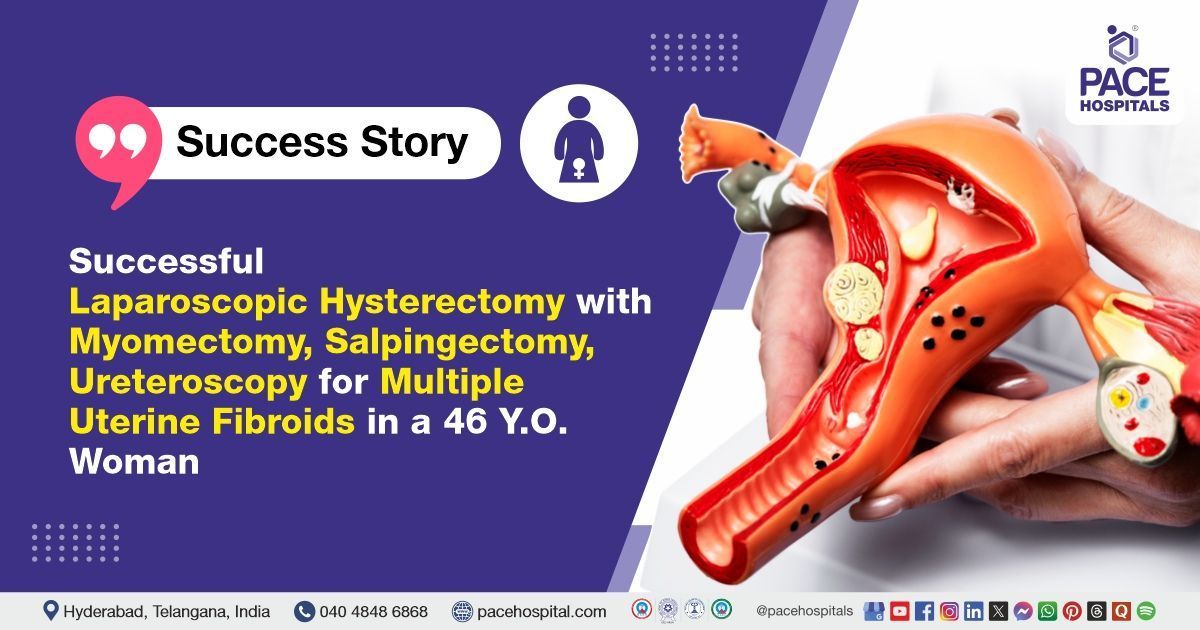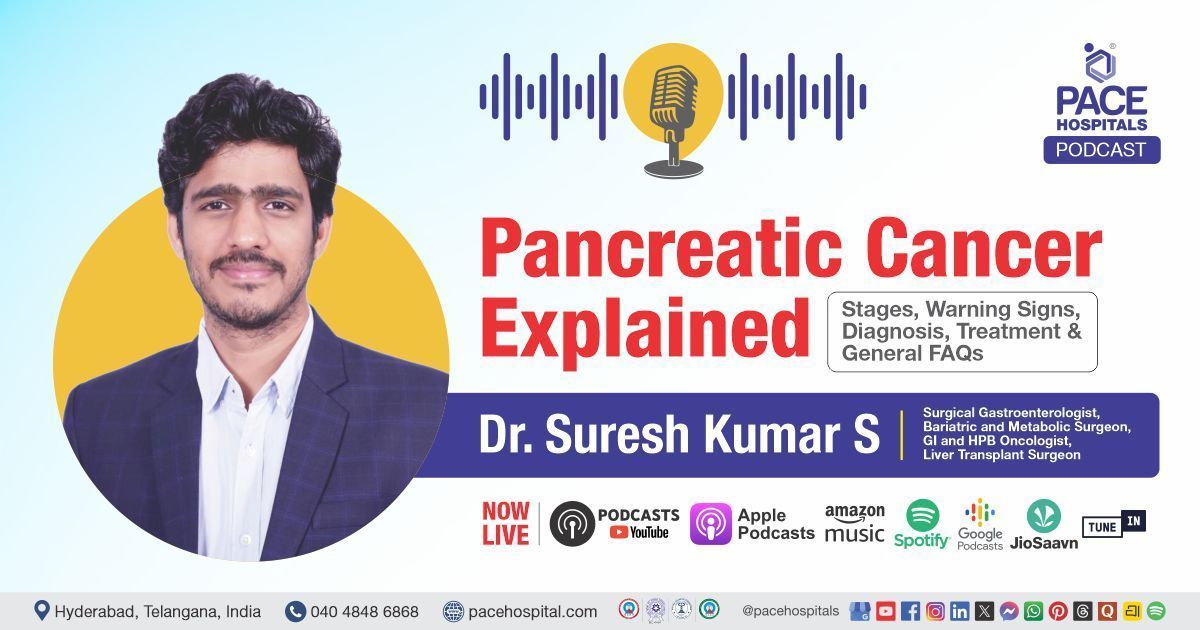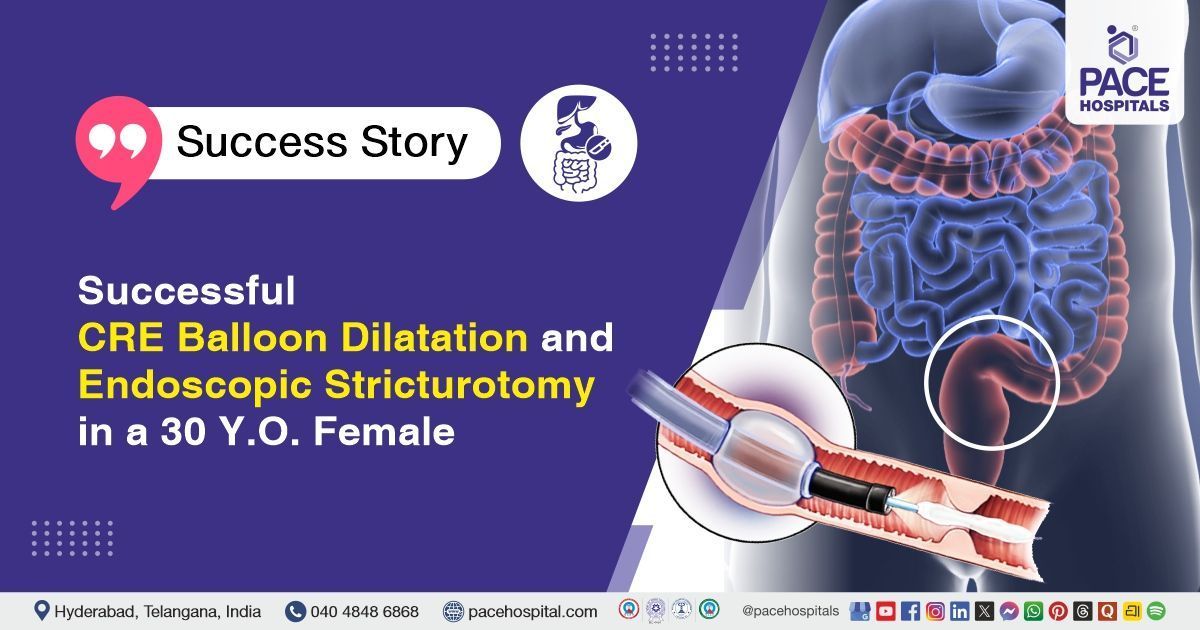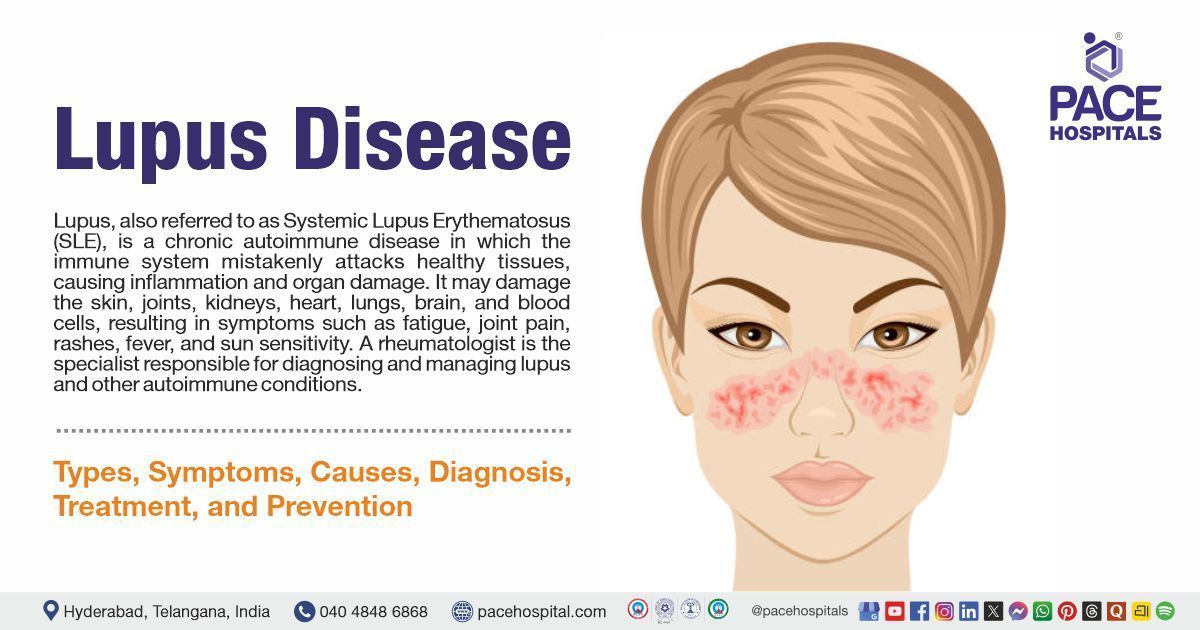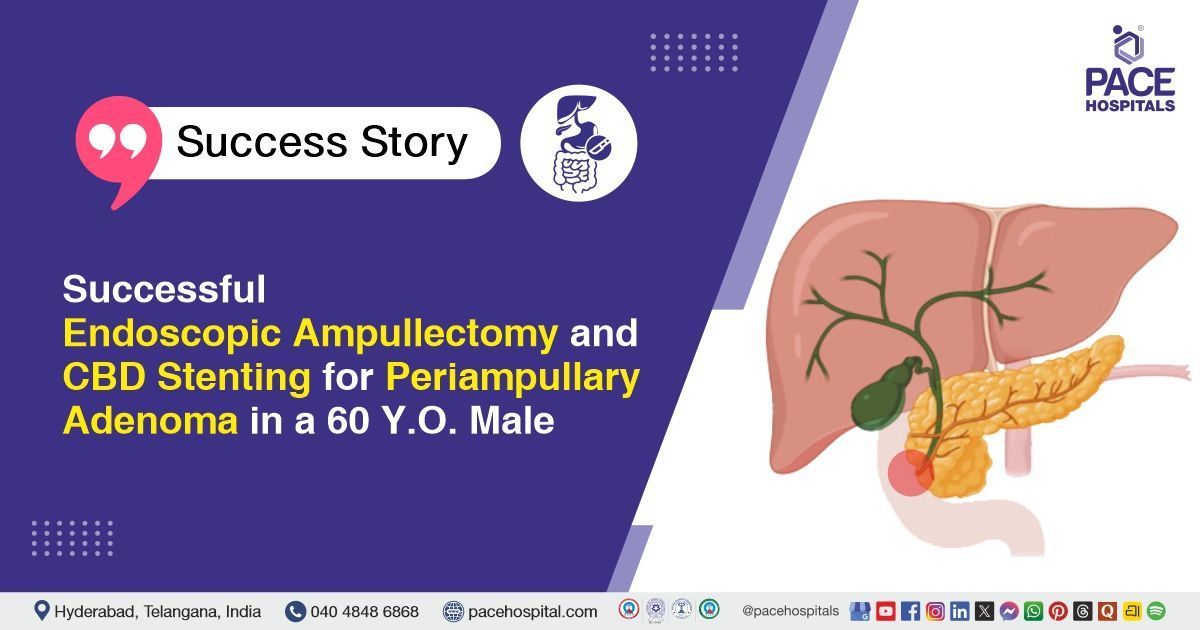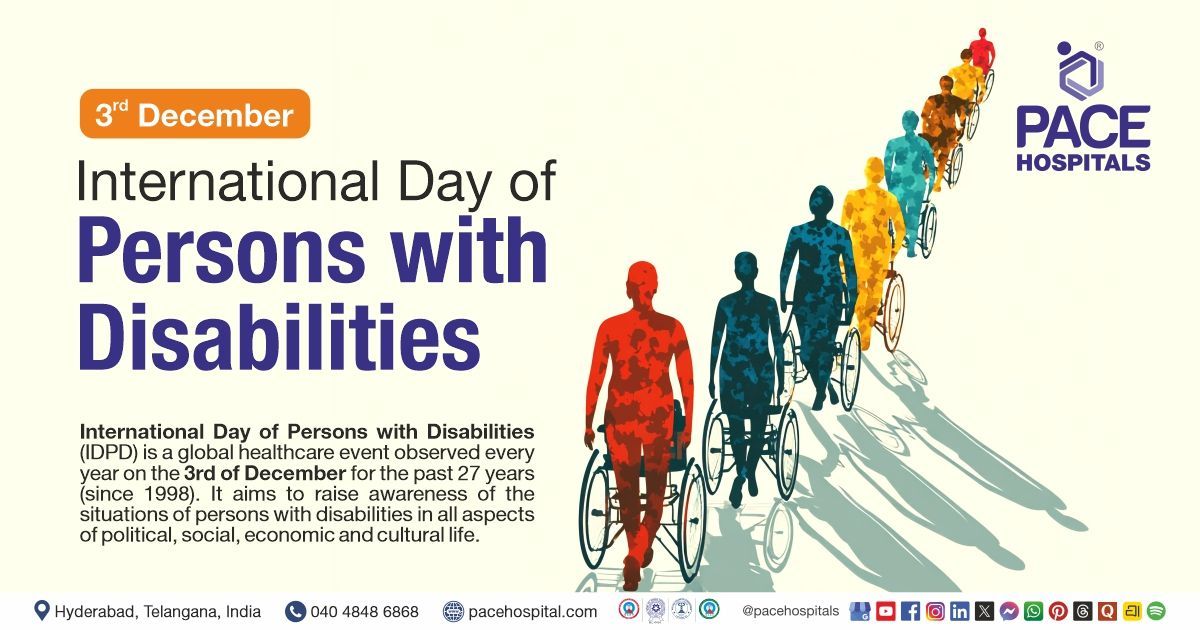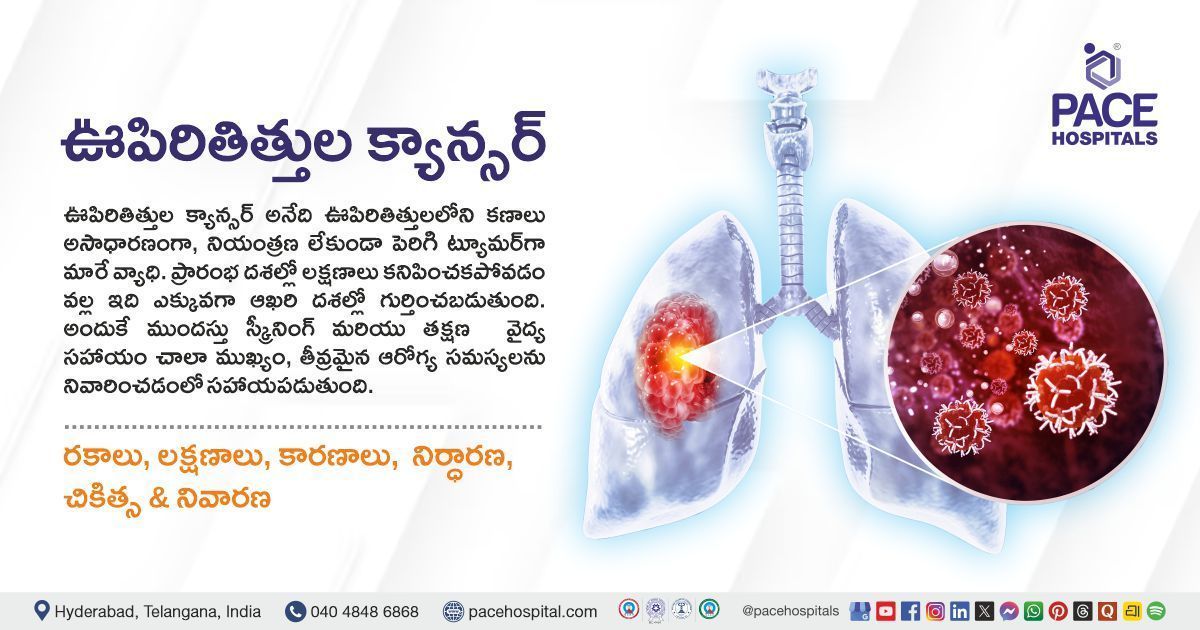Successful Laparoscopic Hysterectomy with Myomectomy, Salpingectomy, Ureteroscopy for Multiple Uterine Fibroids in a 46-Y.O. Woman
PACE Hospitals
PACE Hospitals’ Expert Gynaecology team successfully performed a Laparoscopic Hysterectomy with broad ligament Myomectomy, Bilateral Salpingectomy, and Ureteroscopy on a 46-year-old female patient diagnosed with multiple uterine fibroids, including a broad ligament fibroid. She had presented with abnormal uterine bleeding and anemia. The procedure was aimed at relieving the patient's symptoms, removing the fibroids, and preventing further complications associated with abnormal bleeding and anemia.
Chief Complaints
A 46-year-old female patient with a
body mass index (BMI) of 22 presented to the Gynaecology Department at
PACE Hospitals, Hitech City, Hyderabad, with complaints of menorrhagia (heavy menstrual bleeding) and prolonged cycles not controlled with medication.
Past Medical History
The patient’s obstetric history was P1L1, indicating one full-term delivery with one living child. She had no known comorbidities.
On Examination
On general examination, the patient was conscious, coherent, and cooperative. Vital signs were within normal limits. Systemic examination revealed normal air entry on respiratory assessment and normal heart sounds (S1 and S2) on cardiovascular examination. Per abdominal examination showed a soft, non-tender abdomen. Breast examination was normal, with no lumps detected. On per speculum and per vaginum examination, the cervix and vagina appeared healthy.
Diagnosis
Upon admission to PACE Hospitals, the patient was evaluated by the Gynaecology team, with a detailed history and clinical examination suggesting a bulky uterus with multiple fibroids, including a broad ligament fibroid. She presented with menorrhagia and prolonged cycles unresponsive to medical management, along with recurrent anemia due to chronic blood loss.
Ultrasound confirmed multiple fibroids, and preoperative investigations revealed mild anemia with microcytic hypochromic RBCs and neutrophilic leukocytosis. Renal function and electrolytes were within normal limits.
Based on these findings, the patient was advised to undergo
Uterine Fibroid Treatment in Hyderabad, India, under the expert care of the Gynaecology Department, ensuring comprehensive evaluation and management tailored to the patient's needs.
Medical Decision Making
After a detailed consultation with Dr. Mugdha Bandawar, Obstetrician, Gynecologist, in collaboration with Urologist consultant Dr. K. Ravichandra, a multidisciplinary approach was taken to determine the most appropriate diagnostic and therapeutic strategy for the patient. Considering her history of previous normal vaginal delivery (P1L1), alongside the clinical findings of a bulky uterus and ultrasound evidence of multiple fibroids, including a broad ligament fibroid, the team assessed the extent of the pathology and potential complications, particularly the proximity of the fibroid to the ureter.
Further evaluation, including physical examination and laboratory investigations, confirmed the need for surgical intervention. It was determined that Laparoscopic Hysterectomy with Broad Ligament Myomectomy, Bilateral Salpingectomy, and Ureteroscopy was identified as the most effective surgical approach to relieve symptoms, control anemia, and prevent further gynecological or urological complications.
The patient and her family members were counselled regarding the diagnosis, the planned procedure, associated risks, expected benefits, and the potential for significant improvement in quality of life, after which informed consent was obtained.
Surgical Procedure
Following the decision, the patient was scheduled to undergo Laparoscopic Hysterectomy Surgery in Hyderabad at PACE Hospitals along with broad ligament myomectomy with bilateral salpingectomy with ureteroscopy under the supervision of the expert Gynaecology Department.
The following steps were carried out during the procedure:
- Preoperative Preparation and Diagnostic Laparoscopy: Under general anesthesia, pneumoperitoneum was established, and laparoscopic ports were placed. Initial laparoscopy revealed a bulky uterus with multiple fibroids, including a 3x3 cm fibroid in the left broad ligament. Bilateral tubes and ovaries appeared normal.
- Ureteroscopy and Ureteric Catheterization: Due to the proximity of the broad ligament fibroid to the left ureter, ureteroscopy was performed and a ureteric catheter was placed to identify and protect the ureter during surgery.
- Broad Ligament Myomectomy: The broad ligament was carefully dissected, and the 3x3 cm fibroid was enucleated without complications. Hemostasis was secured with bipolar cautery.
- Laparoscopic Hysterectomy with Bilateral Salpingectomy: The uterus with cervix and bilateral fallopian tubes was removed laparoscopically. Uterine vessels and ligaments were safely coagulated and transected. The specimen was sent for histopathology.
- Final Inspection and Closure: The pelvis was irrigated and checked for bleeding. The ureteric catheter was retained. After confirming hemostasis, instruments were removed, and port sites were closed.
Postoperative Care
The postoperative period was uneventful. During the hospital stay, the patient was initially managed in the Surgical Intensive Care Unit (SICU) for observation and was later shifted to the ward once she became hemodynamically stable. She was provided with supportive care, which included intravenous antibiotics, analgesics, antipyretics, antiemetics, proton pump inhibitors, and intravenous fluids. The patient tolerated oral intake well, had adequate pain control, and mobilized gradually. Postoperative ultrasound screening showed no collections, ascites, pleural effusion, or bowel dilatation. The gallbladder was mildly distended with sludge. She remained stable throughout her stay and was discharged in satisfactory general condition with instructions for follow-up.
Discharge Medications
At the time of discharge, the patient was prescribed a broad-spectrum oral antibiotic for infection prevention, an NSAID combined with muscle relaxant for postoperative pain management, and a proteolytic enzyme to reduce inflammation and support healing. A proton pump inhibitor was given to prevent gastric irritation. Additionally, she was advised iron and folic acid supplements to manage anemia, a multivitamin to support general recovery, and a topical antibiotic ointment for local wound care.
Advice on Discharge
The patient was advised to avoid heavy lifting and strenuous physical activity during the postoperative recovery period to prevent stress on the surgical site. She was allowed to follow a regular balanced diet as tolerated.
Emergency Care
The patient was informed to contact the emergency ward at PACE Hospitals in case of any emergency or development of symptoms like fever, abdominal pain, or vomiting.
Review and Follow-up Notes
The patient was advised to return for a follow-up appointment with the Gynecologist in Hyderabad at PACE Hospitals after 1 week with the biopsy report.
Conclusion
This case highlights the successful laparoscopic management of multiple
uterine fibroids, including a broad ligament fibroid, in a patient with abnormal uterine bleeding and anemia. A multidisciplinary approach ensured safe surgical outcomes, including ureteric protection through intraoperative ureteroscopy. The patient had an uneventful postoperative recovery and was discharged in stable condition with appropriate follow-up advice.
Integrated Surgical Strategies for Safe Management of Complex Fibroid Cases
Integrated surgical strategies are vital for safely managing complex fibroid cases, especially when fibroids involve challenging locations near critical structures like the ureters. Combining the expertise of a Gynecologist / Gynaecology doctor and urologists allows for precise surgical planning and execution, minimizing risk of injury and complications. Minimally invasive approaches, such as laparoscopy, enhance visualization and access, leading to less blood loss and faster recovery. Preoperative imaging and intraoperative techniques, including ureteroscopy, help in safeguarding vital structures. This collaborative approach ensures comprehensive care tailored to the patient’s unique anatomy and pathology. Overall, integrated surgical strategies improve safety, efficacy, and patient outcomes in difficult fibroid surgeries.
Share on
Request an appointment
Fill in the appointment form or call us instantly to book a confirmed appointment with our super specialist at 04048486868

